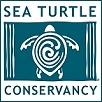Durin g the fall of 1997, researcher Dr. Dave Nelson, U.S. Army Corps of Engineers’ Waterways Experiment Station, began the Tampa Bay Sea Turtle Trackng Project as part of a year long effort to determine the movements of the turtles in and around the Bay, their behavior, and migration in the Gulf of Mexico. Little is known about the sea turtle populations known to live in the Tampa Bay area. Satellite tags will be used to monitor the location of the sea turtles during their stay in Tampa Bay and to follow their migration around the Gulf of Mexico
g the fall of 1997, researcher Dr. Dave Nelson, U.S. Army Corps of Engineers’ Waterways Experiment Station, began the Tampa Bay Sea Turtle Trackng Project as part of a year long effort to determine the movements of the turtles in and around the Bay, their behavior, and migration in the Gulf of Mexico. Little is known about the sea turtle populations known to live in the Tampa Bay area. Satellite tags will be used to monitor the location of the sea turtles during their stay in Tampa Bay and to follow their migration around the Gulf of Mexico
In August, a sub-adult male loggerhead turtle was captured and tagged. In November, two loggerheads (a male & a female) & two Kemp’s ridley – were cap tured and tagged. Make sure to check back for map updates and new turtles!
tured and tagged. Make sure to check back for map updates and new turtles!
Because males do not leave the water (except occasionally– to chase a fleeing female through the surfline!), they don’t readily lend themselves to observation, and they are rarely tagged. Consequently, few studies have been done with male sea turtles and little is known about their movements and biology
For more information on sea turtles, check out the Sea Turtles Information section of our website.
Click on the turtle’s name to see a map of its movements.
SPIKE – Spike is the fifth, and newest, loggerhead sea turtle to be captured and satellite tagged for this project. Spike was captured and released on June 1, 1998 off Egmont Key in Tampa Bay. Spike is a subadult loggerhead that has a carapace length of 62 cm and a weight of 75 lbs. Spike’s tail is 13 cm long and his head is 13.2 cm wide.
JOE – Joe is the fourth loggerhead sea turtle to be captured and satellite tagged for this project. Joe is an adult male and was captured and released on May 31, 1998 off Egmont Key in Tampa Bay. Joe’s carapace length was 99.3 cm and weighed 84.4 kg (or 230 lbs). That makes Joe the largest loggerhead captured so far!
JASON – The first sea turtle to be successfully tagged and tracked was captured and released on August 22, 1997, in the entrance to Tampa Bay off Egmont Key. The loggerhead sea turtle, measured 81.7 cm straight line carapace length and was borderline between an adult and subadult size. Jason spent a lot of time in Tampa Bay but moved south to Ft. Myers area. New position points for Jason! He has returned to Tampa Bay!
PAUL – The second male loggerhead to be tagged was captured and released on November 15, 1997, off Egmont Key. Paul measured 96.0 cm straight line carapace length. Paul has been very active and continues to provide location points.
DEBBIE – The third loggerhead to be tagged was captured and released on November 16, 1997, just outside of the entrance to Tampa Bay. Debbie is the first female loggerhead of the study and measured 93.8 cm straight line carapace length.
KEN – The first Kemp’s ridley to be tagged was captured and released on November 18, 1997, also in the entrance to Tampa Bay. Ken measured 53.4 cm straight line carapace length. Since the Kemp’s ridley is one of the rarest sea turtle species, it will be interesting to see there movements. We have recently lost touch with Ken, it is not know why. If any signals are recevied, we will let you know.
MEGHANN – The second Kemp’s ridley to be tagged was captured and released on November 19, 1997, to the west of Egmont Key, just outside the entrance to Tampa Bay. Meghann measured 54.9 cm straight line carapace length. It was not possible to tell the sex of either of the Kemp’s ridley. We have recently lost touch with Meghann, the battery may have lost power and it is possible that no further signals will be received.
More detailed information about the study can be obtained from the Environmental Branch, Jacksonville District, U.S. Army Corps of Engineers.
You can also check out what the U.S. Army Corps of Engineers is doing to protect sea turtles during hopper dredging.
Funding for the Tampa Bay and Gulf of Mexico Sea Turtle Tracking research was provided by the U.S. Army Corps of Engineers. Locations were provided by Dr. Dave Nelson (Environmental Laboratory, U.S. Army Corps of Engineers’ Waterways Experiment Station). Maps created by the Sea Turtle Survival League.